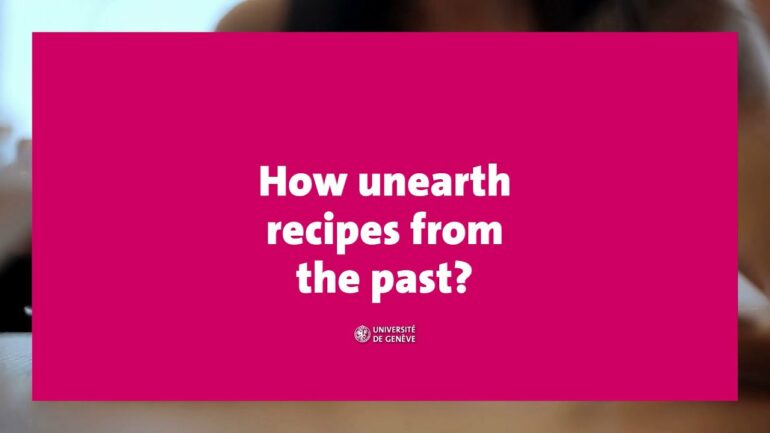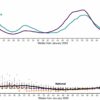Using a new multidisciplinary approach, a team from UNIGE and CNRS has retraced the food practices of a Senegalese village. This method will be useful for other archaeological research.
Food is more than just a biological need. A marker of culture, it encompasses a wide range of practices that reveal the identity of a region, a country or a social community. But how can we trace some of these habits and customs when no oral or written trace remains?
A team from the University of Geneva (UNIGE) and the CNRS has successfully tested a multidisciplinary approach that includes ceramology, chemistry, archaeozoology and archaeobotany. Applied to excavations carried out on a dump, it enabled scientists to reconstruct the recent food history of a small village in Senegal.
This approach could be used to excavate older archaeological sites in other parts of the world. The study is published in PLOS ONE.
Tracing the past food practices of a community without oral or written sources is both a historical and methodological challenge. A team of archaeologists and chemists from the UNIGE and the CNRS has taken up this challenge by setting up a large-scale, multidisciplinary and unprecedented study in the Senegalese village of Edioungou, in Lower Casamance.
This village of 300 inhabitants is home to a now-abandoned rubbish dump known as the “Poubelle des Mamans” (“Mothers’ Rubbish Bin”). Used by families in a village neighborhood throughout the 20th century, the site contains numerous relics linked to the region’s food history.
“Digging up this site was a real challenge. Because of its function and age, it contains a far greater number of remains than most traditional archaeological sites,” explains Pauline Debels, a postdoctoral scholar during this work, a current collaborator at the ARCAN laboratory in the Section of Biology at the UNIGE Faculty of Science, and a postdoctoral scholar at the CNRS Trajectoires Laboratory, co-first author of the study.
“We dug centimeter by centimeter, following the archaeological strata. This enabled us to recover remains, often very degraded, of pottery, bones, shells, fabrics and certain foods.”
A dialogue between disciplines
To analyze these remains of very different origins, the team developed an approach combining several disciplines, including archaeozoology (the study of animal bones in an archaeological context), carpology (the study of seed and fruit remains), micro-botany, ceramology and chemistry of organic residues.
“Bringing together so many disciplines in the context of archaeological research is unprecedented. It’s a very complicated approach to coordinate. Some objects had to be analyzed by several specialists. We had to make sure that each analysis didn’t compromise the next,” explains Léa Drieu, a postdoctoral scholar during this work, a current researcher at the CNRS’s CEPAM Laboratory and co-first author of the study.
This method enabled the research team to identify a number of animal and plant products, once consumed by the village, trapped in sediments or in the walls of the containers. It also gave the scientists an insight into how the food was processed and the function of the containers, based on the observation of use-traces on the pottery walls and the distribution of lipid concentrations along their vertical profile.
“We found that fish, oysters and rice formed the staple diet of the dump’s users, with a component of land animals on festive occasions. Salty and acidic boiled foods seem to have been favored,” says Anne Mayor, director of the ARCAN Laboratory in the Section of Biology at the UNIGE Faculty of Science, senior lecturer at the Global Studies Institute, who led the study with Martine Regert, director of research at CEPAM.
To study older sites
Festive foods, for example, have been identified based on the food residues preserved in the containers. Alongside the discovery of pig jaws, evidence of meat dishes has been chemically identified in very large containers, which were probably used at large gatherings. Overall, this work highlights a certain continuity in dietary practices, before a marked break two or three decades ago.
“Globalization has introduced or generalized new foods and new materials for containers, such as plastic and metal, profoundly changing eating practices, particularly among the younger generations. Some types of pottery with specific functions are becoming rarer in the most recent strata of the excavation and have virtually disappeared today, replaced by these stronger, lighter materials that are very easy to obtain,” explains Debels.
This study, conducted as part of the SNSF Sinergia project “Foodways in West Africa: an integrated approach on pots, animals and plants”, is a first step in understanding the evolution of food practices during the pre-colonial, colonial and post-colonial periods in Senegal. It is also a first successful test of the combined approach developed by the UNIGE and CNRS team. It can now be applied to older archaeological sites and to other regions of the world.
More information:
Pauline Debels et al, Investigating grandmothers’ cooking: A multidisciplinary approach to foodways on an archaeological dump in Lower Casamance, Senegal, PLOS ONE (2024). DOI: 10.1371/journal.pone.0295794
Provided by
University of Geneva
Citation:
Chemists, biologists, archaeologists: Who will unearth the recipes of our ancestors? (2024, May 30)



